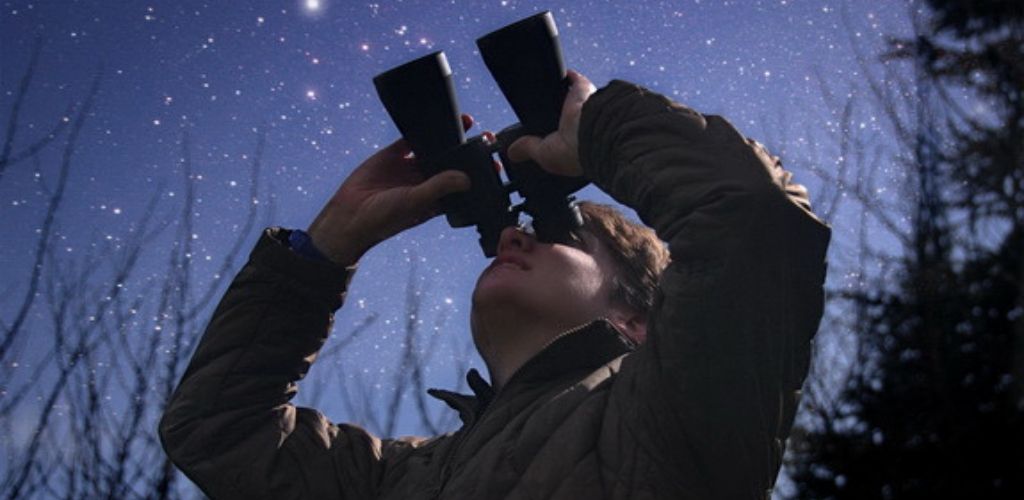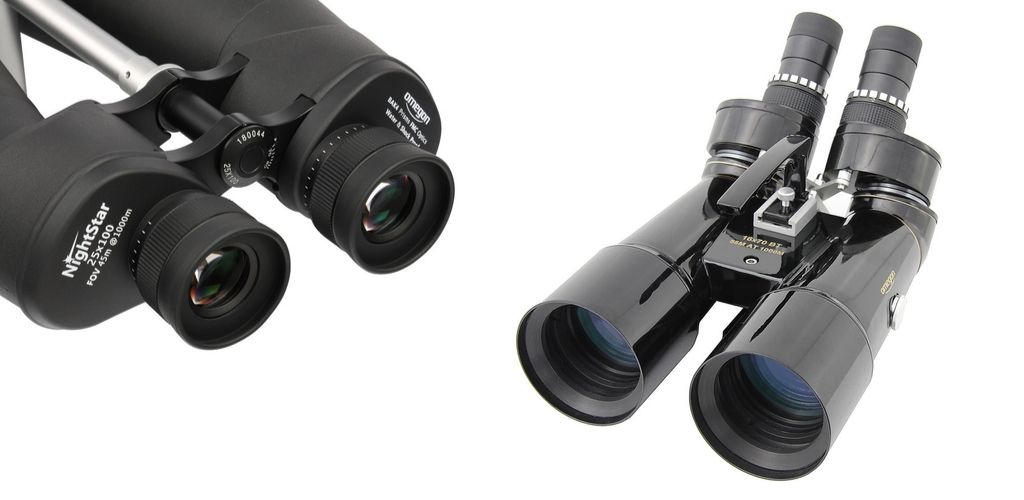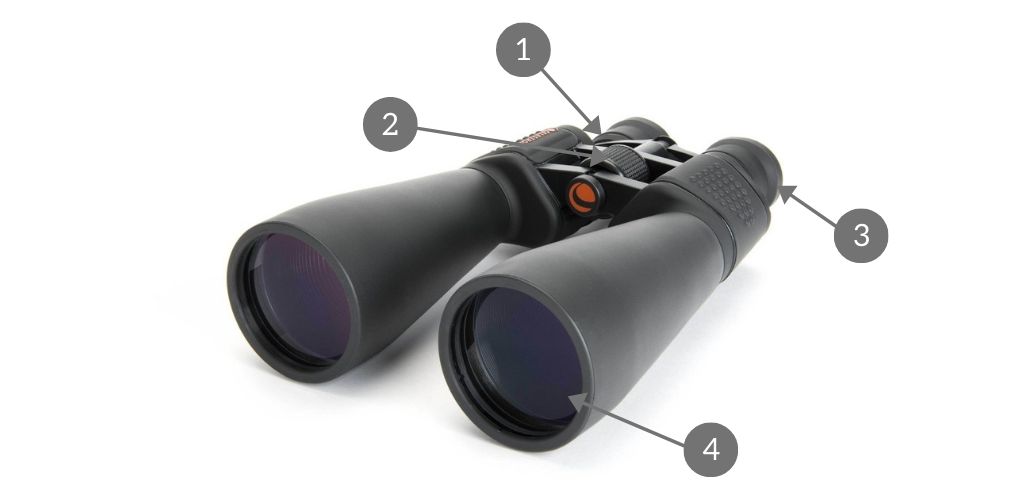
There are several types of binoculars on the market, and brands are numerous. Some are sold as made for sports or general use, others have special treatments and some features are sometimes put forward to persuade you to buy them. But when it comes to using them to observe celestial objects in the night sky, what are the most useful binoculars ?
Why observing the night sky with astronomy binoculars ?
One of the many benefits of using binoculars is that the image is straight, like the naked eye, and because the lenses are larger than your eyes, you see thousands of celestial objects that you can not not see without.

What binoculars are suitable for astronomy ?
Binoculars are actually an assembly of two refractors. The inner prisms have the sole function of shortening the tubes. There are two types : the roof prisms, with which the binoculars will have rather short and straight tubes (this is the case of most compact binoculars) and the Porro prisms, that we find above all in binoculars made for observation.
The Porro prisms are generally most suited to astronomy, often because it is used in binoculars that have larger lenses. This does not mean that you can not use binoculars with roof prisms. Porro prisms simply tend to have better brightness. Astronomy binoculars 7×50 or 10×50 with Porro prisms will give the best results because they don’t accentuate a lot the shaking of your hands and offer a sufficiently wide field of vision.

“10×50”, “7×50″… What is that and how to choose ?
Binoculars are characterized by two numbers, 10×50 for example. They indicate the magnification, here x10, and the diameter of the lenses, here 50 mm. The diameter of the lenses is the most important because it determines the amount of light that enters your binoculars, that is to say the brightness and sharpness of the celestial objects observed. With binoculars with a lens diameter of less than 40 mm, you will not see celestial objects very well.
With a much larger diameter, they will be heavy and difficult to hold in your hands. If the magnification is too strong, they will also be difficult to hold in the hands and the image will not be bright enough. For example, 16×50 will also make your hands shake 16 times more ! Ideally, you should use 7×50 or 10×50 binoculars because they will be easier to handle and their aperture is large enough so you can see hundreds of celestial objects in the night sky.
And remember that you can keep good astronomy binoculars all your life, so cover their lenses to avoid scratching them when you’re not using them.
Anatomy of astronomy binoculars

1) Focus ring of the right eyepiece
The mechanism of this eyepiece provides a precise focus for the right eye. First, use the center focus wheel so that the image is clear in the left eye.
2) Center focus wheel
It brings the eyepieces closer to the body of the binoculars to get a clear picture. It must be turned slowly and smoothly to be the most effective.
3) Eyepieces
These are the lenses through which you look. They control the magnification of the binoculars. They must be comfortable and make images sharp.
4) Lenses
These are the lenses at the front, which collect light. With an average ideal diameter of 50 mm, they should be treated so that a maximum of light passes through the glass.
